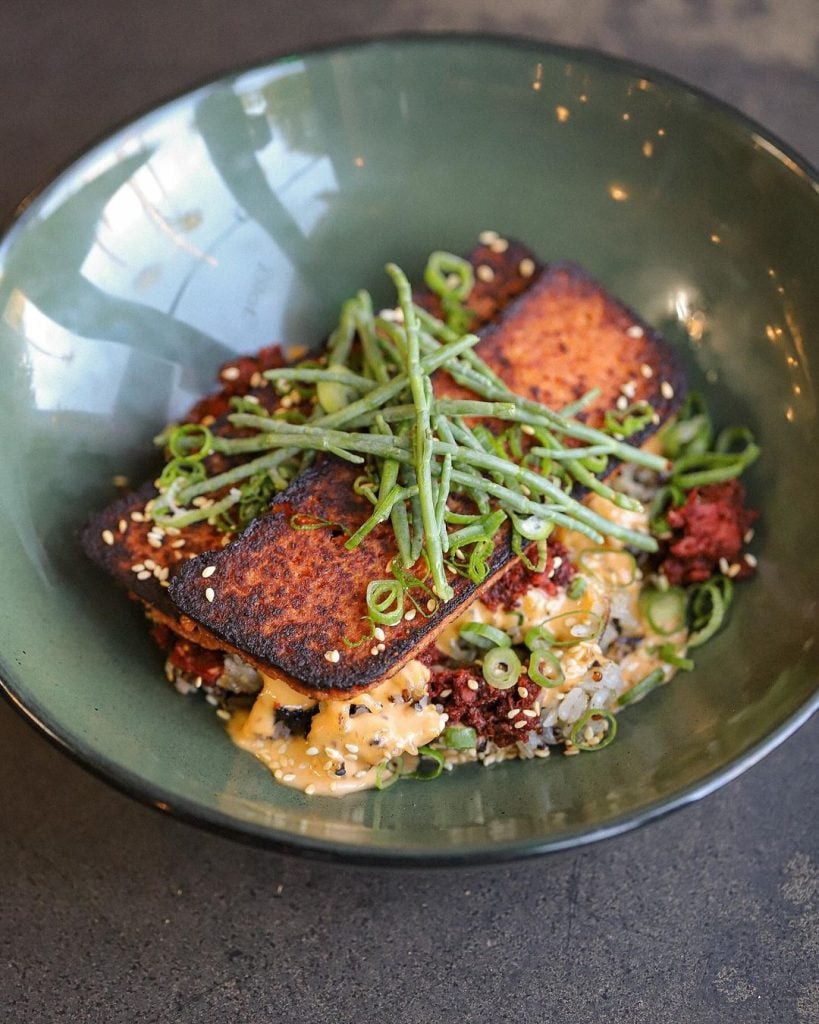Turmeric
You may know turmeric as the bitter yellow powder that gives Indian and Southeast Asian curries an aromatic punch. But the spice—which comes from a root that looks a lot like ginger—has a long tradition of purported health benefits in ayurvedic medicine, and it’s been making its way into the mainstream, appearing in lattes, juices, and even cookies. Recent studies show that curcuminoids, a chemical in turmeric, may play a part in reducing inflammation, easing rheumatoid arthritis and knee pain, and in some cases blocking the growth of tumors.
Gourd
This fall and winter gourd has been appearing on more menus because it’s full of fiber and vitamins, but also simple to prepare. The skin is edible and you don’t have to peel it.
Tamari
Like soy sauce, tamari is made from fermented soybeans, but it’s thicker and doesn’t have any gluten (soy sauce usually contains wheat).

Decoding a Menu
Yellowfin Tuna at Avant at Rancho Bernardo Inn: Garlic, sesame, seaweed, charred shallots, nori, onion
Seaweed
“We use four very different varieties of seaweed and kelp on our menu. We make a lightly lemon-dressed seaweed salad using dulse, arame and gracilaria varieties of seaweed to dress our San Diego–caught yellowfin.
“I believe the next big health craze on the horizon is going to be edible kelp and seaweeds. Seaweed is an extremely sustainable and overabundant plant that contains the amazing healing powers of fixing our gut health, as it is a natural probiotic. It seems chefs these days are looking past the sweet and unnatural flavors of the cliché “wakame salad” you sometimes find festering on sushi buffets, and diving into the diverse world of textures and flavors of naturally foraged seaweed.”
—Chris Gentile, chef de cuisine, Avant
Hemp seeds
You won’t get buzzed or fail a drug test by adding hemp seeds to your smoothies, bowls, or salads. These edible seeds don’t contain any THC, but are packed with nutrients: omega-3 and omega-6 fatty acids, potassium, vitamin A, and iron.
Decoding a Menu
Warm Miso Ginger Kelp Noodles at Café Gratitude: Kelp noodles with broccolini, purple kale, adaptogenic mushrooms
Kelp noodles
There’s no flour at all in kelp noodles. It’s three ingredients: edible kelp, water, and sodium alginate (which is extracted from brown seaweed). The noodles are soaked for two hours and massaged in warm water and Himalayan salt.
Forbidden rice
“Forbidden rice” is just black rice that has a lot of anthocyanin pigment, the same pigment that gives eggplant its deep hue and is a known antioxidant. It’s found in Thai sticky rice desserts or Chinese porridge. The rice is nicknamed “forbidden” because in China, it was supposedly meant only for the wealthy.
Freekeh
Pronounced “FREE-kah,” this ancient grain has twice the fiber of quinoa. It’s green durum wheat that’s been roasted, and it’s been consumed in the Middle East and Northern Africa for centuries.
Ask the Expert
What are “ancient grains,” and do I need them?
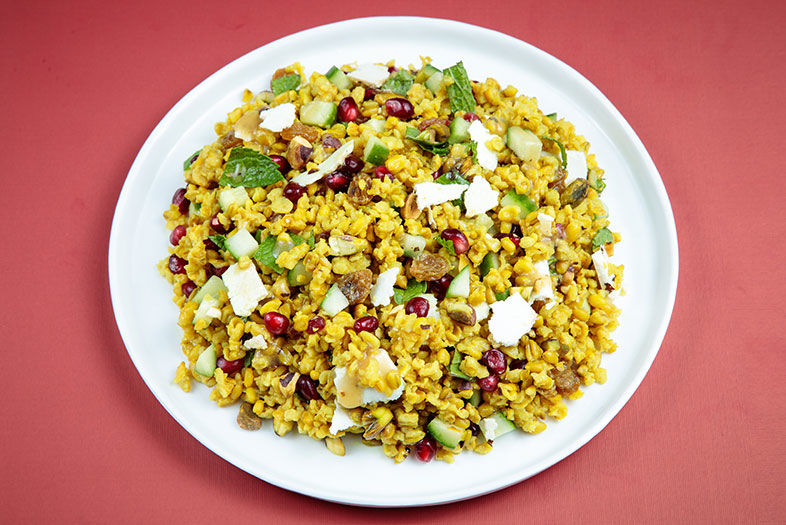
Decoding a Menu
“Ancient grains are whole, unprocessed grains that haven’t been changed over thousands of years or affected by modern technological processing. They contain all three edible components of the plant kernel—bran, endosperm, and germ.
“The bran is the thick outer layer that is rich in fiber. The endosperm is the middle layer that consists of starch, and the inner germ layer has protein, fat, vitamins, and minerals. Examples of ancient grains include quinoa, millet, einkorn, oats, barley, and buckwheat.
“Ancient grains are a vital component of the human diet. The fibrous bran serves to slow digestion, making one feel full and contributing to weight control. It also acts to control blood sugar, lower cholesterol, and prevent constipation. The germ layer has important nutrients that help prevent inflammation and promote good health. Diets high in whole grain are associated with a lower risk of hypertension, heart disease, diabetes mellitus, obesity, and some types of cancer.
“Processed grains, by contrast, have the bran and germ layer removed and leave only the endoderm. Eating processed grains is associated with increased risk of diabetes, weight gain, obesity, and high cholesterol.
“For the average adult American diet, it’s recommended to have six servings of grains a day, with at least half of them from whole grains.”
—Vikki Lane, MD, internal medicine specialist, Scripps Clinic.
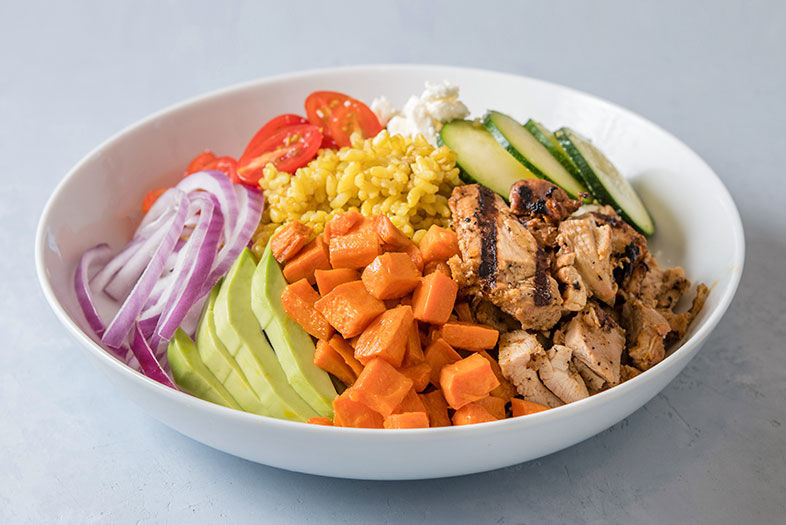
Decoding a Menu
Triton Bowl at Head Lettuce: Turmeric brown rice, tomato, feta, cucumber, red onion, chickpeas, sweet potato, avocado, zucchini, red wine oregano vinaigrette
